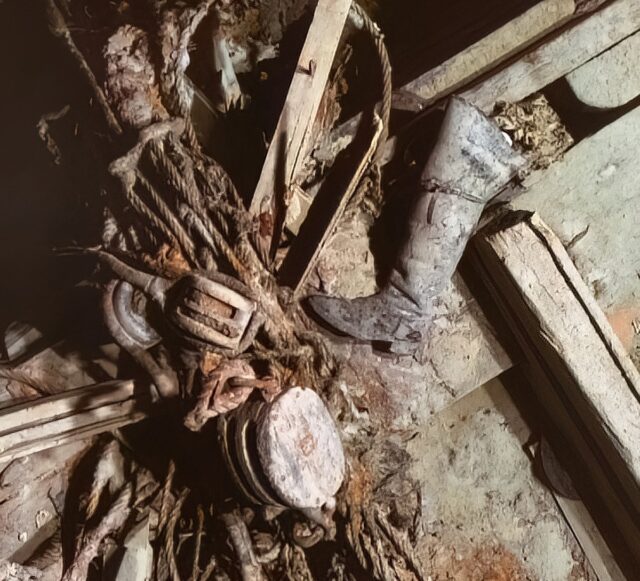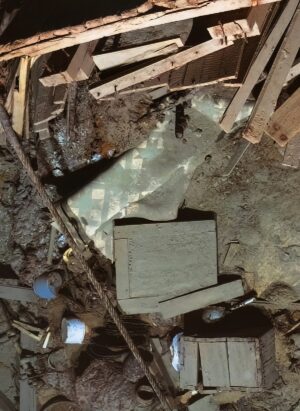Finally, as the search was coming down to the wire, the Endurance22 team finally found the long-sought wreckage 3,008 meters down, roughly four miles (6.4 km) south of the ship’s last recorded position. The ship was in pristine condition partly because of the lack of wood-eating microbes in those waters. In fact, the Endurance22 expedition’s exploration director, Mensun Bound, told The New York Times at the time that the shipwreck was the finest example he’s ever seen; Endurance was “in a brilliant state of preservation.”
Once the wreck had been found, the team recorded as much as they could with high-resolution cameras and other instruments. Vasarhelyi, particularly, noted the technical challenge of deploying a remote digital 4K camera with lighting at 9,800 feet underwater, and the first deployment at that depth of photogrammetric and laser technology, resulting in a stunning millimeter-scale digital reconstruction of the entire shipwreck. “The payoff [was] seeing that incredible 3D imagery from 3,000 feet below the Weddell Sea,” she said.
What lies beneath
Falklands Maritime Heritage Trust
The Endurance as discovered underwater during the 2022 expedition.
Falklands Maritime Heritage Trust

Falklands Maritime Heritage Trust
The taffrail and wheel of the Endurance underwater, as seen over a century after it sank.
Falklands Maritime Heritage Trust

Falklands Maritime Heritage Trust
A 2022 sub-sea photograph shows a boot on the remains of the ship that lie at the ocean floor. This boot was once worn by Frank Wild.
Falklands Maritime Heritage Trust
The taffrail and wheel of the Endurance underwater, as seen over a century after it sank.
Falklands Maritime Heritage Trust
A 2022 sub-sea photograph shows a boot on the remains of the ship that lie at the ocean floor. This boot was once worn by Frank Wild.
Falklands Maritime Heritage Trust

Falklands Maritime Heritage Trust

Falklands Maritime Heritage Trust

Falklands Maritime Heritage Trust
Chin and Vasarhelyi skillfully wove together these parallel storylines for their documentary: Shackleton and his men struggling to survive and Expedition22 racing against time to find the wreckage of the Endurance. “Because they actually found it, the 2022 expedition gave us an amazing payoff to this story,” said Vasarhelyi. “But the stakes of both narratives are very different. One is mortal stakes, and the other one is reputational. I think that the reasons why individuals find themselves in these circumstances are really interesting because normally they’re pretty personal, and people can identify with that.”
It was challenging to decide how much to include of both narrative threads; the directors certainly had enough material for five or more hours. They chose to focus on the broad strokes augmented by personal moments of humanity and occasional humor—not to mention heartbreak, such as the moment when Shackleton and his men are forced to kill their sled dogs for food. “We had a debate about whether to include the dogs, and I was like, ‘We have to,’” said Vasarhelyi. “It shows how desperate they were, and it also is a great character moment. That must have been awful, but it was the right thing to do, almost a merciful thing instead of letting them starve to death.”
